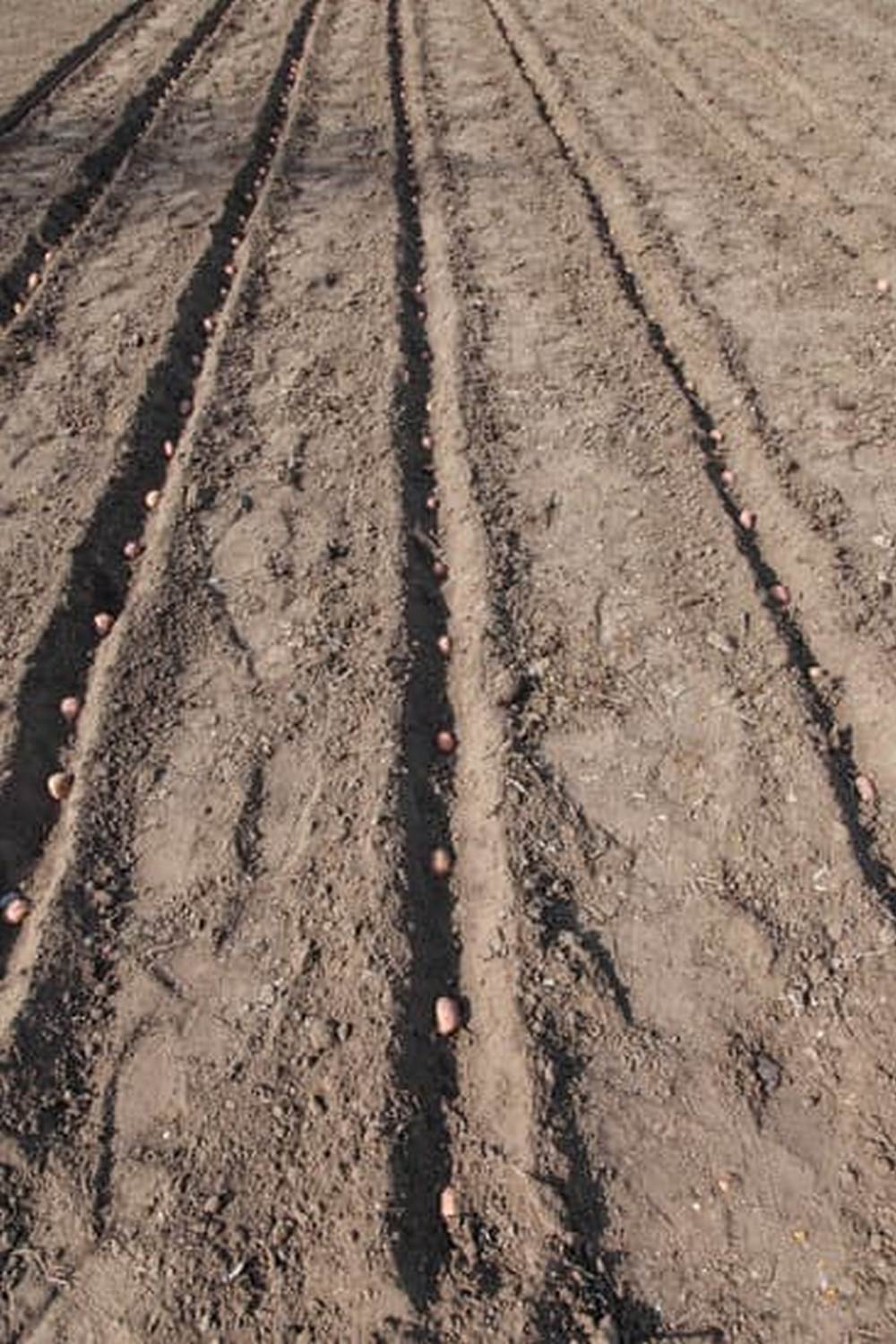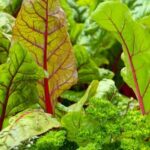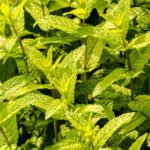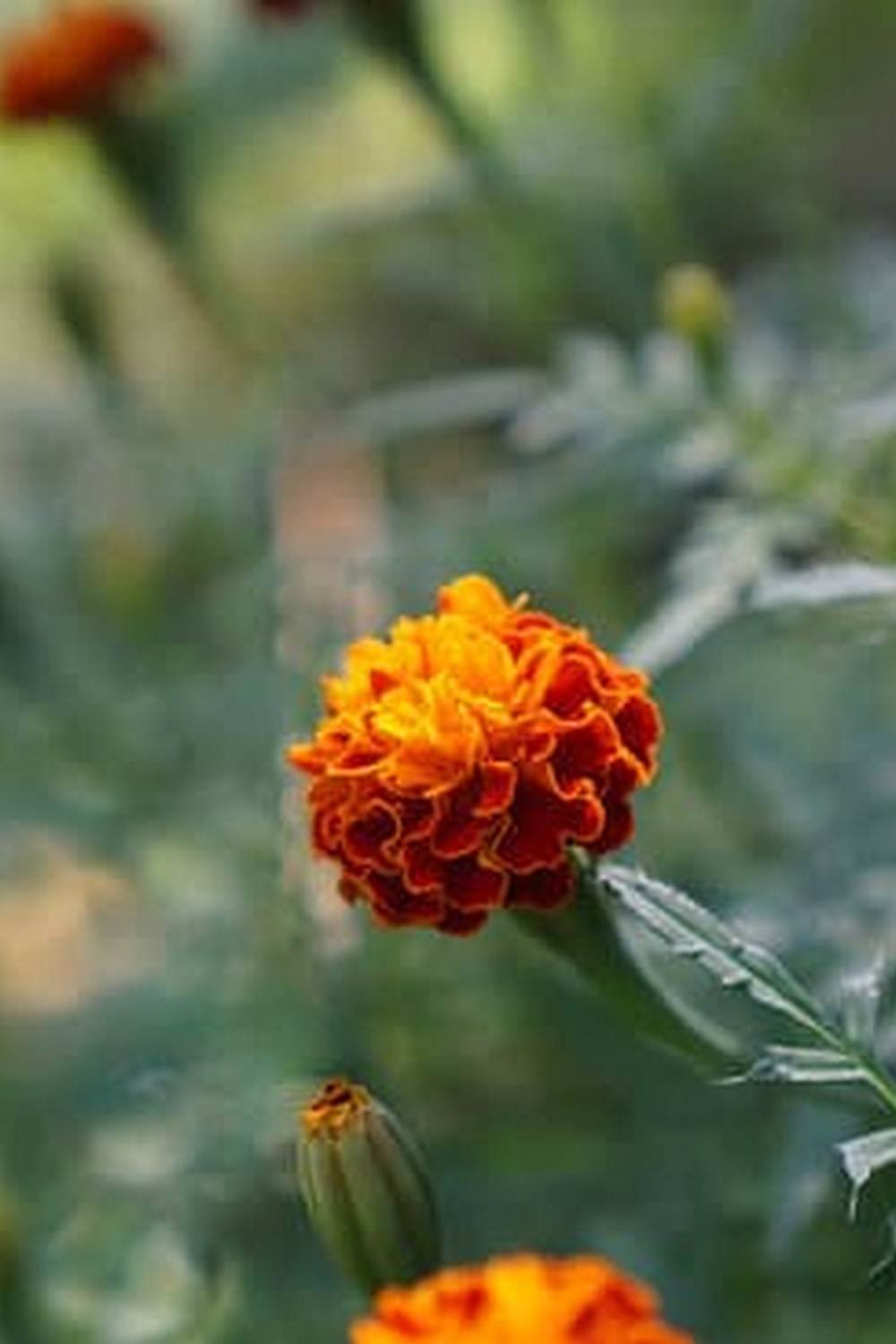Vegetable gardening in Alaska may seem like a daunting task, with its harsh climate and short growing season. However, for those who are willing to embrace the challenges and adapt their gardening techniques, it can also bring immense joy and satisfaction.
In this article, we will explore the unique climate and growing conditions of Alaska, discuss the selection of vegetables that thrive in this environment, offer tips on extending the growing season, provide guidance on soil preparation and essential tools and supplies, address common pests and diseases, showcase success stories from Alaska gardeners, and connect readers with workshops, events, and resources within the Alaskan gardening community.
Alaska’s climate is known for its extremes – long cold winters with minimal daylight followed by summers where the sun barely sets. These challenging conditions make vegetable gardening a different experience compared to other regions. However, despite these obstacles, many gardeners in Alaska have successfully cultivated thriving vegetable gardens. The satisfaction that comes from growing your own food in such an unpredictable environment is what makes vegetable gardening in Alaska truly special.
One crucial factor to consider when embarking on a vegetable garden in Alaska is understanding the state’s unique climate and growing conditions. From frost dates to temperature fluctuations and sunlight availability, all these elements play a significant role in determining what vegetables can be grown successfully. By familiarizing ourselves with these essential factors, we can better navigate through the challenges posed by Alaska’s climate.
In the next sections of this article series, we will delve deeper into specific topics related to vegetable gardening in Alaska. We will guide you through selecting the right vegetables for successful cultivation in this region.
We will also share techniques to extend your growing season beyond what might seem possible initially. Additionally, we’ll offer advice on preparing your soil for cold-weather gardening and introduce you to essential tools and supplies that will help set you up for success.
So if you’re ready to embark on a vegetable gardening journey in Alaska, keep reading. We’ll provide you with the knowledge and resources you need to tackle the challenges while embracing the rewards that come with gardening in this beautiful and unique state.
Understanding Alaska’s Unique Climate and Growing Conditions
Alaska’s unique climate and growing conditions provide both opportunities and challenges for vegetable gardening. The state is known for its cold temperatures, short growing season, and extreme variations in daylight hours throughout the year. Understanding these factors is crucial to successfully growing vegetables in Alaska.
One of the key considerations when gardening in Alaska is the length of the growing season. Many areas of the state have a shorter growing season compared to other parts of the country. This means that vegetables need to be selected carefully based on their ability to grow and mature within this limited timeframe. Vegetables with shorter maturity times, such as radishes, lettuce, and spinach, are good choices for Alaska gardens.
Alaska’s fluctuating daylight hours also impact vegetable growth. During summer months, especially in northern parts of the state, there can be up to 24 hours of daylight. This extended period of sunlight can benefit certain crops, allowing them to grow quickly. On the other hand, it’s important to protect plants from excessive exposure during this time by using shade cloth or protective coverings when necessary.
Another significant factor is Alaska’s cold temperatures. Frost dates play a crucial role in determining when it is safe to start planting outdoors. Gardeners need to pay close attention to frost dates and use techniques such as starting seeds indoors or using cold frames and greenhouses to extend the growing season.
Understanding Alaska’s unique climate and growing conditions sets the foundation for successful vegetable gardening in the state. By selecting appropriate vegetables for the short growing season, protecting plants from excessive daylight exposure, and utilizing techniques like starting seeds indoors or using protective coverings, gardeners can overcome challenges and enjoy bountiful harvests in their Alaskan gardens.
Selecting the Right Vegetables for Successful Gardening in Alaska
When it comes to vegetable gardening in Alaska, one of the key factors for success is selecting the right vegetables that can thrive in its unique climate and growing conditions. While Alaska’s colder temperatures and shorter growing season may present some challenges, there are still plenty of vegetables that can be grown successfully. Here is a list of vegetables that are well-suited for gardening in Alaska:
- Cold-Weather Crops: Vegetables like kale, chard, broccoli, cabbage, and Brussels sprouts can tolerate cooler temperatures and even frost. These crops are ideal choices for early spring or fall planting when the weather is still chilly.
- Root Vegetables: Carrots, beets, radishes, and turnips are excellent choices for Alaska gardens. These vegetables can handle the colder temperatures and have a longer growing season compared to other crops.
- Hardy Greens: Lettuces, spinach, arugula, and other leafy greens can tolerate cool temperatures and even light frosts. They can be grown throughout the summer months by providing some shade during hot spells.
- Potatoes: Potatoes are a staple crop in many Alaskan gardens due to their adaptability to various soil types and their ability to store well over winter.
- Peas: Peas are an excellent choice for cold weather gardening as they prefer cooler temperatures for optimal growth. They can be planted early in the spring once the soil has thawed.
- Herbs: Some herbs like parsley, chives, dill, and cilantro can thrive in Alaska’s growing conditions. They add flavor to your dishes while also attracting beneficial insects to your garden.
- Quick-Growing Crops: Radishes, lettuce varieties like mesclun mix or microgreens, and certain Asian greens like bok choy or tatsoi have short maturity dates and can be harvested quickly before the first frost hits.
It’s important to choose vegetable varieties that have shorter maturity dates and are labeled as cold-hardy or suitable for northern climates. Additionally, starting plants indoors or using season extenders like greenhouses or cold frames can help lengthen the growing season and expand your vegetable options in Alaska.
Preparing the Soil for Cold-Weather Vegetable Gardening
One of the most crucial steps for successful vegetable gardening in Alaska is properly preparing the soil. Alaska’s unique climate and growing conditions require special attention to ensure that the soil is suitable for cold-weather crops. Here are some essential steps to take when preparing the soil for cold-weather vegetable gardening in Alaska:
- Test and Amend the Soil: Before planting, it’s important to test the soil pH and nutrient levels. Alaskan soils tend to be naturally acidic, so adding lime can help raise the pH to a more neutral level. In addition, enriching the soil with organic matter like compost or well-rotted manure can improve its fertility and structure.
- Clear Away Debris: Remove any rocks, weeds, or other debris from the garden area before working on the soil. Debris can hinder proper drainage and provide a breeding ground for pests and diseases.
- Till or Turn Over the Soil: Alaskan soils are often heavy clay or silt, which can become compacted over time. Use a garden tiller or a spade to loosen up the soil, turning it over to a depth of about 8-12 inches. This will improve drainage and create a loose, friable texture that allows root growth.
- Add Organic Matter: Incorporating organic matter into the soil is crucial for its long-term health. Mix in well-composted materials like compost or aged manure to add nutrients and improve moisture retention capabilities. This will help feed your plants throughout the growing season.
- Mulch Your Beds: After preparing your soil, it’s beneficial to apply a layer of mulch over your vegetable beds. A thick layer of organic mulch like straw or wood chips helps retain moisture in dry climates while regulating soil temperature fluctuations.
By taking these steps to prepare your soil for cold-weather vegetable gardening in Alaska, you are laying the foundation for a successful growing season. By optimizing soil fertility and structure, you will provide your plants with the best possible conditions to thrive in Alaska’s challenging climate.
Tips and Techniques for Extending the Growing Season in Alaska
Extending the growing season in Alaska can be a challenging task due to its short summers and long, harsh winters. However, with some planning and the right techniques, it is possible to enjoy an extended growing season and maximize your vegetable garden’s productivity. Here are some tips and techniques for extending the growing season in Alaska:
Start Seeds Indoors
One effective way to extend the growing season in Alaska is by starting your seeds indoors. By starting seeds early indoors, you can give your plants a head start before transplanting them outside once the weather warms up. Use grow lights or place trays near a sunny window to provide adequate light for seedlings. This technique allows you to have mature plants ready for planting as soon as the ground thaws.
Utilize Season Extenders
Season extenders such as cold frames, hoop houses, and row covers are fantastic tools for protecting plants from frost and extending their growing season. Cold frames are essentially small, enclosed structures that capture heat from the sun and create a warm microclimate for your plants.
Hoop houses consist of PVC pipes or metal hoops covered with translucent plastic sheeting and can protect rows of vegetables from temperature extremes. Row covers are lightweight fabric sheets that help insulate plants while still allowing sunlight, water, and air to reach them.
Incorporate Mulching Techniques
Mulching is an effective technique for extending the growing season while also providing several benefits for your garden. Apply a thick layer of organic mulch such as straw or shredded leaves around your plants to insulate the soil against temperature fluctuations, retain moisture, suppress weed growth, and prevent erosion. Mulch acts as a blanket that helps regulate soil temperatures during cold snaps, allowing you to plant earlier in spring and harvest later in fall.
With these tips and techniques for extending the growing season in Alaska, you can maximize your vegetable garden’s output and enjoy fresh produce for a longer period. By starting seeds indoors, utilizing season extenders, and incorporating mulching techniques, you can overcome the challenges of Alaska’s climate and enjoy a successful and bountiful garden.
Remember to stay connected with the Alaska gardening community to learn from experienced gardeners and exchange tips and advice for gardening success in the Last Frontier.
Essential Tools and Supplies for Alaska Vegetable Gardening
Alaska’s unique climate and growing conditions require specific tools and supplies to ensure successful vegetable gardening. In this section, we will explore some essential items that can help make your gardening experience in Alaska more productive and enjoyable.
Garden Tools
Having the right tools is crucial for any gardener, and Alaska gardeners are no exception. Some essential garden tools for Alaska vegetable gardening include:
- Shovel or Spade: A sturdy shovel or spade is necessary for digging holes, turning soil, and mixing amendments into the soil. Look for a tool with a durable handle that can withstand the tougher soils of Alaska.
- Hand Trowel: A hand trowel is a versatile tool for planting small transplants, weeding, and filling in holes around plants. Choose a trowel with a comfortable grip that allows you to work efficiently.
- Garden Fork: A garden fork is useful for breaking up compacted soil, aerating the root zone of plants, and removing rocks or debris from the garden bed.
Protective Supplies
The Alaskan climate can be harsh on plants, making it necessary to protect them from extreme weather conditions and pests. Here are some protective supplies every Alaska gardener should have:
- Row Covers: Row covers provide protection against frost, wind, and pests while allowing sunlight to reach the plants. They can be used to extend the growing season in both spring and fall.
- Cold Frames or Greenhouses: These structures offer additional protection to plants during colder months by creating a microclimate that shields them from harsh temperatures. Cold frames are portable structures placed directly over garden beds, while greenhouses are larger permanent structures.
- Pest Control Measures: Insect netting, organic pest sprays, and traps are essential for managing common pests in Alaska gardens such as aphids, slugs, and caterpillars.
Soil Amendments and Fertilizers
Alaska’s soils are often acidic and lack essential nutrients, so it’s important to amend the soil to create optimal growing conditions for vegetables. Some common soil amendments and fertilizers that can benefit Alaska gardens include:
- Compost or Organic Matter: Adding compost or organic matter helps improve soil structure, retain moisture, and increase nutrient availability. It adds beneficial microorganisms that promote healthy plant growth.
- Lime: Alaskan soils tend to be acidic, so adding lime can help balance the pH level and make essential nutrients more readily available to plants.
- Slow-Release Fertilizers: Slow-release fertilizers provide a steady supply of nutrients to plants over an extended period. Look for fertilizers with a balanced ratio such as 10-10-10 or choose one specifically formulated for vegetable gardens.
By having these essential tools and supplies on hand, Alaska gardeners can overcome the challenges posed by the climate and ensure successful vegetable gardening throughout the growing season. With proper preparation, protection, and care, you can enjoy a bountiful harvest of fresh vegetables from your own Alaskan garden.
Dealing with Common Pests and Diseases in Alaska Gardens
Alaska’s unique climate and growing conditions can present challenges when it comes to vegetable gardening. One of the main challenges that gardeners face in Alaska is dealing with common pests and diseases. These can significantly impact the success of a garden if not properly managed. However, with the right knowledge and strategies, gardeners can effectively combat these issues.
One common pest that many Alaska gardeners encounter is the cabbage looper. These small green caterpillars feed on a wide range of vegetables, including cabbage, broccoli, and kale. To control cabbage loopers, it is important to regularly inspect plants for any signs of damage or caterpillars. If detected early, handpicking them off the plants can be an effective method. Additionally, using floating row covers or applying biological insecticides can help protect plants from these pests.
Another challenge in Alaska gardens is powdery mildew, a fungal disease that affects many vegetable crops such as cucumbers and squash. Powdery mildew appears as a white powdery coating on plant leaves and stems. To prevent this disease, it is essential to provide adequate air circulation around the plants by spacing them properly. Watering at soil level instead of overhead irrigation can also help reduce moisture levels that promote fungal growth.
Slugs are another common pest in Alaska gardens that can cause significant damage to vegetable plants. These slimy creatures feast on young seedlings and leave behind a trail of destruction. To deter slugs, creating barriers such as copper tape or diatomaceous earth around your plants can be effective. Beer traps can also be used to lure them away from your precious vegetables.
By being proactive in identifying and managing common pests and diseases in Alaska gardens, vegetable growers can increase their chances of having a successful harvest. It is important to stay vigilant throughout the growing season and take necessary steps to prevent or control these issues as soon as they arise. With proper care and attention, Alaska gardeners can overcome these challenges and enjoy the bountiful rewards of their vegetable gardens.
Harvesting and Preserving the Bounty
Alaska may have a short growing season, but that doesn’t mean gardeners in the Last Frontier cannot enjoy a bountiful harvest. With proper planning and techniques, Alaskan vegetable gardeners can successfully grow and preserve their own produce, even in the face of challenging climate conditions.
One success story comes from Sarah Jenkins, a resident of Anchorage who has been vegetable gardening in her backyard for over 10 years. She shares her experience of growing cold-hardy crops such as kale, broccoli, and carrots. Jenkins believes that choosing the right varieties is key to her success.
She selects vegetables that are specifically bred for colder climates, ensuring they can withstand Alaska’s chilly temperatures. By paying attention to the average number of frost-free days in her region, she’s able to determine which crops have enough time to mature before fall sets in.
Another inspiring tale comes from Mike Thompson, a gardener based in Fairbanks who uses innovative techniques to extend his growing season. He has constructed a greenhouse where he grows warm-season vegetables like tomatoes and peppers throughout the summer months. Come winter, he utilizes a hydroponic system that allows him to continue cultivating greens such as lettuce and spinach indoors. Thompson emphasizes the importance of creating microclimates within larger gardening spaces, allowing for greater control over temperature and light conditions.
These success stories demonstrate that with careful planning and dedication, vegetable gardening in Alaska can be incredibly rewarding. By choosing appropriate crops for the climate, utilizing techniques like greenhouses or indoor hydroponics, and connecting with other Alaskan gardeners for tips and advice, it is possible to harvest an abundant crop even in this challenging environment.
| Success Story | Gardener | Location | Techniques |
|---|---|---|---|
| Sarah Jenkins | Anchorage | Grows cold-hardy crops bred for colder climates, plans according to frost-free days | Kale, broccoli, carrots |
| Mike Thompson | Fairbanks | Utilizes a greenhouse and indoor hydroponics to extend growing season | Tomatoes, peppers (summer); lettuce, spinach (winter) |
Connecting with the Alaska Gardening Community
One of the most valuable aspects of vegetable gardening in Alaska is the strong and supportive gardening community. Engaging with this community can provide valuable resources, guidance, and a sense of camaraderie for novice and experienced gardeners alike. There are various workshops, events, and resources available throughout the state to help gardeners connect with one another and expand their knowledge.
Workshops are an excellent way to gain hands-on experience and learn from experienced gardeners. Many local gardening organizations host workshops on a variety of topics such as soil preparation, seed starting, pest management, and extending the growing season. These workshops often include demonstrations, interactive activities, and expert-led discussions. Attending these workshops not only provides valuable information but also allows gardeners to network with others who share their passion.
In addition to workshops, Alaska offers numerous gardening events that bring together the gardening community. Events like plant sales, seed swaps, and garden tours provide opportunities for gardeners to interact with one another, share tips and tricks, exchange plants or seeds, and explore unique gardens in their area. These events foster a sense of community among gardeners by creating a space for them to celebrate their shared interests while also learning from one another.
Moreover, various resources are available in Alaska to support vegetable gardening enthusiasts. Local libraries often have an extensive collection of books on gardening specific to Alaskan conditions. Online forums and social media groups dedicated to Alaskan gardening allow individuals to connect with others virtually without geographical limitations. Furthermore, many universities or cooperative extension offices offer free publications or online resources specific to Alaskan gardening practices which can assist gardeners in troubleshooting common issues or finding specialized advice.
By connecting with the Alaska gardening community through workshops, events, and resources, vegetable gardeners can tap into a wealth of knowledge built upon years of experience in challenging growing conditions. Whether it’s attending a workshop to learn practical skills, participating in a local event to meet fellow gardeners, or accessing online resources to find specific information, engaging with the gardening community can enhance the overall gardening experience and help gardeners thrive in Alaska’s unique environment.
Conclusion
In conclusion, vegetable gardening in Alaska may come with its own unique set of challenges, but the rewards are well worth it. Despite the harsh climate and short growing season, Alaskans have found ways to successfully grow a variety of vegetables and enjoy a bountiful harvest. By understanding Alaska’s unique climate and making informed decisions about plant selection, soil preparation, and cultivating techniques, gardeners can extend their growing season and maximize their yield.
One key aspect of successful vegetable gardening in Alaska is connecting with the local gardening community. Workshops, events, and resources are available to help gardeners learn from experienced individuals and share their own experiences. Networking with fellow gardeners provides an opportunity to exchange tips, knowledge, and even swap seeds or seedlings. These connections can also foster a sense of camaraderie among gardeners who understand the specific challenges faced in Alaskan gardens.
Harvesting and preserving the bounty is both satisfying and practical for Alaska vegetable gardeners. By utilizing various preservation methods such as freezing or canning, gardeners can stock up on homegrown produce to enjoy throughout the year. Sharing success stories within the community not only celebrates achievements but also inspires others to take up vegetable gardening in Alaska.
Although vegetable gardening in Alaska may require more effort than in other regions, it offers its own set of rewards. From experiencing the joys of self-sufficiency to relishing fresh meals from your own backyard, the satisfaction gained from growing vegetables is immeasurable. By embracing the unique challenges that come with gardening in Alaska and utilizing appropriate techniques and resources, anyone can cultivate a successful vegetable garden in this remarkable state.
Frequently Asked Questions
Which vegetables grow well in Alaska?
Several vegetables can grow well in Alaska due to its unique growing conditions. Root vegetables like potatoes, carrots, and beets thrive in the cool climate and shorter growing season. Leafy greens such as lettuce, spinach, and kale also do well as they can tolerate cooler temperatures.
Cabbage, broccoli, cauliflower, and Brussels sprouts are among the cruciferous vegetables that have adapted to Alaska’s environment and can be successfully grown. Additionally, certain hardy herbs like chives, parsley, and thyme can be cultivated in Alaskan gardens.
When should I plant my garden in Alaska?
The timing of planting a garden in Alaska depends on various factors such as the specific region within the state and the type of vegetable you wish to grow. In general, it is recommended to start planting after the danger of frost has passed which is usually around mid-May for most regions.
However, some cool-season crops like peas, radishes, and lettuce can be sown earlier while using frost protection measures. Proper planning is crucial due to Alaska’s short growing season – some vegetables may need to be started indoors or transplanted from seedlings to ensure they have enough time to mature before the first frost in early September.
Do any vegetables grow in Alaska?
Yes, several vegetables can indeed grow in Alaska despite its challenging climate. While the growing season is shorter compared to other regions in the United States, it is still possible to cultivate a wide range of crops with proper planning and care. As mentioned earlier, root vegetables like potatoes and carrots are well-suited for Alaska’s cooler climate and shorter growing season.
Leafy greens including lettuce and spinach can also thrive when planted at the appropriate time during spring or late summer for fall harvests. Other examples of vegetables that grow well in Alaska include cabbage, broccoli, cauliflower, beans (both bush types and climbing varieties), peas, onions (from sets or transplants), zucchini (when protected from cold temperatures), tomatoes (when grown indoors or in greenhouses), and peppers (when grown indoors or in greenhouses). By selecting the right varieties, adapting plant spacing and timing to the climate, and implementing proper care techniques, it is possible to enjoy a bountiful vegetable garden in Alaska.

If you’re looking to get into vegetable gardening, or are just looking for some tips on how to make your current garden better, then you’ve come to the right place! My name is Ethel and I have been gardening for years. In this blog, I’m going to share with you some of my best tips on how to create a successful vegetable garden.





